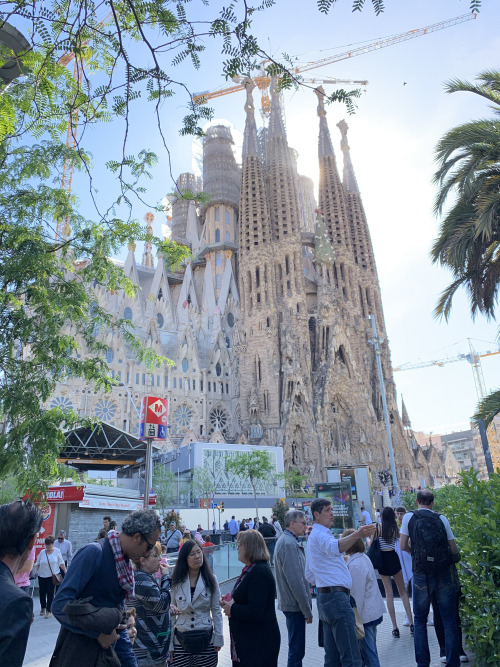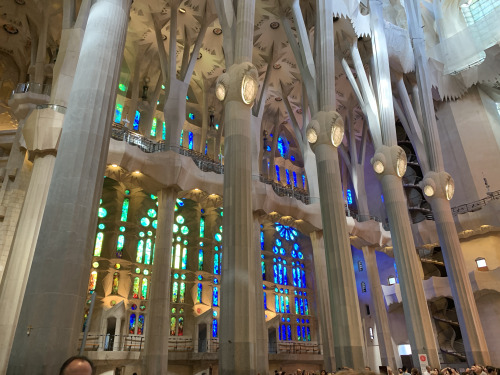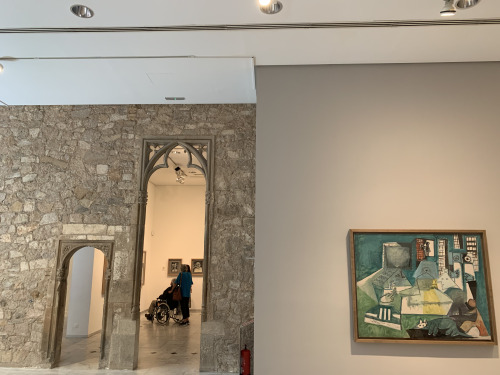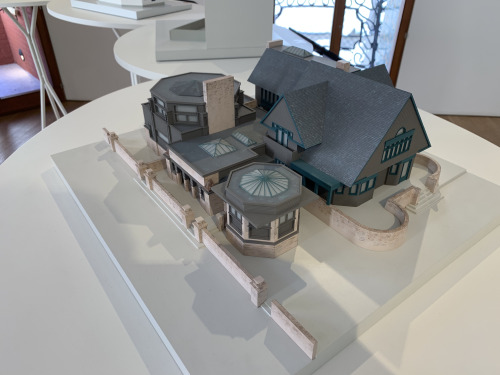The International Criminal Court – Week Five
The Hague, The Netherlands
June 10, 2019
Kyle Smith
“The glory of justice and the majesty of law are created not just by the Constitution – nor by the courts – nor by the officers of the law – nor by the lawyers – but by the men and women who constitute our society – who are the protectors of the law as they are themselves protected by the law.”
– Former United States (US) Senator and Attorney General, Robert F. Kennedy.

Today, students in the Georgia Institute of Technology’s European Union Study Abroad Program visited the International Criminal Court (ICC) in The Hague. This international treaty-created body is the first and only permanent court established for prosecuting war crimes, crimes against humanity, crimes of aggression, and genocide. The Court got its start when the Rome Statute gained ratification from 60 state-parties in July 2002 and has since grown to have 122 state-parties. Although the Court is meant to complement national legal systems and relies on the cooperation and support of state-parties, it has been able to seek and provide justice to victims of some of the most brutal and unimaginable crimes. It is this pursuit – that of seeking the truth and providing justice for those who would otherwise not be able to attain it – that puts into proper perspective the important role that the Court as an institution plays. It is also this pursuit that truly embodies the “glory of justice and the majesty of law” that Robert F. Kennedy spoke about. For it is the members of society that are not only protected by the law, but also create the norms and values on which the spirit of the law, as well as that of justice, are based. Kennedy’s quote, however, also embodies another fundamental notion on which the ICC is based, namely that of the necessity to have and maintain the support of the people in the communities that the Court seeks justice on behalf of.
Throughout the visit, students raised questions about the lengthiness of Court proceedings, the Court’s seemingly disproportionate focus on Africa, the future of the ICC, the politicization of the Court, the role that the Court plays in ensuring relief and aid to victims, and the reasons that some states have been unwilling to become state-parties to the Rome Statute, a few of which are discussed below.

Beginning with the discussion on the length of ICC proceedings, students learned that proceedings can often last years for a number of reasons, some of which include that the ICC relies on the cooperation of state-parties and does not have a police force to apprehend or compel witnesses or accused suspects to come before it. The Court may also face language barriers especially as it relates to ascertaining a witness’ testimony and maintaining the integrity of the information provided without altering the meaning of words and phrases. To date, the Court has secured two convictions, one guilty plea, and completed a total of nine cases (The Washington Post 2018). This exceedingly slow pace has caused many to reasonably ask whether the Court is efficient with regard to using its limited resources to faithfully pursue justice. The benchmark, however, for evaluating the Court’s progress on this front should not be other well-established national court systems but rather what existed before, which was an ad hoc system that created tribunals to hold individuals accountable following vicious atrocities on a case by case basis. Such a method was not only inefficient but also was no guarantor that future acts elsewhere in the world would be punished or prosecuted, especially if it was not politically expedient for leaders of the international community. The ICC, in contrast, is a permanent institution with the backing of 122 states, demonstrating the legitimacy of the Court in the international community. Its permanent status provides a level of continuity that the previous ad hoc system was unable to provide.
Another area of inquiry was the Court’s involvement in cases that seemed to focus exclusively on Africa. Students heard from a representative from the Office of the Prosecutor, one of the organs of the Court, that a number of the cases that the ICC has prosecuted were referred by African state-parties themselves or by the UN Security Council, both of which require the Office of the Prosecutor to investigate. These circumstances make clear that the ICC has not made a concerted effort to single out Africa but rather that it is duty-bound to investigate the cases that are referred. However, there is still a reasonable argument as to the import of such a trend as it undoubtedly sends a message, whether intentional or not, that Western powers such as the US are in essence above international law. One could certainly argue that in light of a number of instances ranging from the Iraq War during the Presidency of George W. Bush or the events at Abu Ghraib and Guantanamo Bay, the former being classified as an act of aggression and the latter as war crimes, that there are issues for which the US should be held responsible and that, if given jurisdiction, the ICC should prosecute.
One area of inquiry that was especially significant to the discussion around states such as the US that have not become parties to the ICC is that the ICC is a court of last resort. This means that the ICC does not act if a state has demonstrated that it is genuinely prosecuting a specific matter. The ICC steps in if a state does not have the capacity or will to genuinely prosecute a matter. Therefore, the myth that the ICC will act as a supranational judicial body that can exert its influence over any state-party to the ICC is simply not the case. What is clear, however, is that any state that wishes to improve its commitment to the rule of law and furthering of human rights should welcome additional scrutiny and the opportunity to have a court of last resort to ensure that truth and justice are sought. It is incumbent on the publics of the various states that have yet to become parties to the ICC to pressure their governments to join as a matter of transparency and accountability.

Lastly, students also learned that a Trust Fund for Victims, separate from the Court, was established to provide relief in the event that the individual convicted is unable to pay for such relief. This is exceptional because it further demonstrates the Court’s resolve to ensure that victims indeed receive justice in all its aspects – culturally, financially, and legally.
As an aspiring civil rights or human rights lawyer, I appreciated learning about all that the Court is doing to further the pursuit of justice and truth around the world. I was deeply moved by the portion of the visit in which the work of the Office of the Prosecutor was explained in regards to getting victims to testify. Persuading a victim to testify is not easy given traditional circumstances within a national legal framework, but given the added challenges of traveling to another part of the world where one may not be familiar with the language, sharing one’s experiences with a group of strangers, and facing potential danger to oneself or one’s family is extremely intimidating. I found it encouraging that there is a Court and structure in place to empower these individuals to share their stories so justice can be sought. A fact that history demonstrates should not be taken for granted.
In conclusion, despite the numerous challenges that the Court faces when it comes to being legally constrained both due to jurisdictional restrictions as well as the reliance on the cooperation of state-parties, the ICC has been and continues to be a permanent institution and court of last resort for the victims of some of the world’s most horrific crimes. It is for this reason that I am deeply inspired by the work of this institution. We should remember that the Rome Statute, which created the Court, is not just a set of words but a fundamental recognition by over 100 states that the pursuit of truth and justice are paramount to ensuring a functioning civil society the world over. It is often said that “justice delayed is justice denied.” It is without question that the ICC has sped the wheels of justice for some of the most vulnerable and marginalized groups in the world.


















